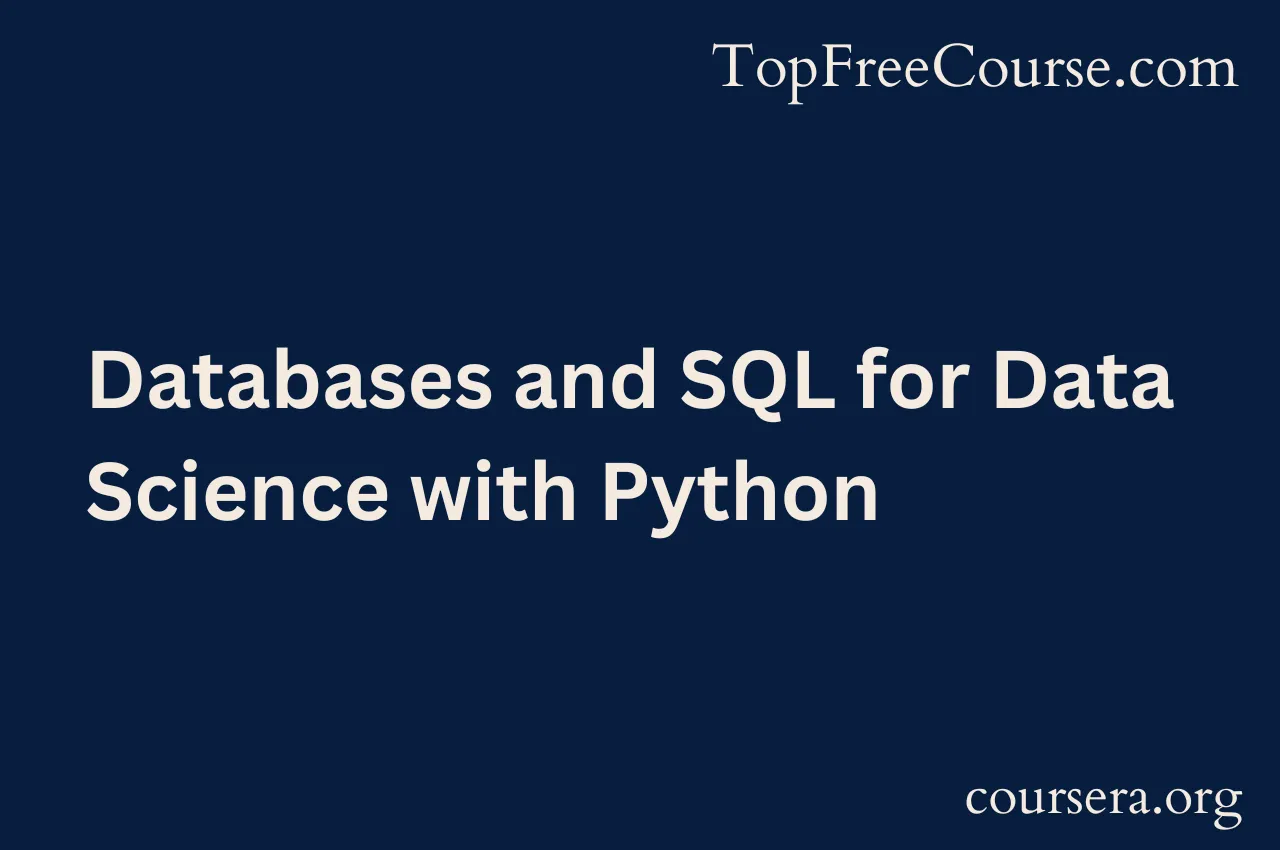What Will You Learn?
Analyze data within a database using SQL and Python.
Create a relational database and work with multiple tables using DDL commands.
Construct basic to intermediate level SQL queries using DML commands.
Compose more powerful queries with advanced SQL techniques like views, transactions, stored procedures, and joins.
About This Course
Provider: Coursera
Format: Online
Duration: 29 hours to complete [Approx]
Target Audience: Beginners
Learning Objectives: After completing this free course, you'll be able to analyze multiple real-world datasets to demonstrate your skills.
Course Prerequisites: NA
Assessment and Certification: NA
Instructor: IBM
Key Topics: SQL, Relational Database Management System (RDBMS), Cloud Databases, Python Programming, Jupyter notebooks, Data Science
Topic Covered:
- - Welcome to SQL for Data Science
- - Introduction to Databases
- - SELECT Statement
- - COUNT, DISTINCT, LIMIT
- - INSERT Statement
- - UPDATE and DELETE Statements
- - Relational Database Concepts
- - Types of SQL statements (DDL vs. DML)
- - CREATE TABLE Statement
- - ALTER, DROP, and Truncate tables
- - How to create a Database instance on Cloud
- - Using String Patterns and Ranges
- - Sorting Result Sets
- - Grouping Result Sets
- - Built-in Database Functions
- - Date and Time Built-in Functions
- - Sub-Queries and Nested Selects
- - Working with Multiple Tables
- - How to Access Databases Using Python
- - Writing code using DB-API
- - Connecting to a database using ibm_db API
- - Creating tables, loading data and querying data
- - Analyzing data with Python
- - Working with Real World Datasets
- - Getting Table and Column Details
- - Views
- - Stored Procedures
- - ACID Transactions
- - Join Overview
- - Inner Join
- - Outer Joins

Comments